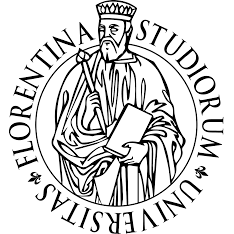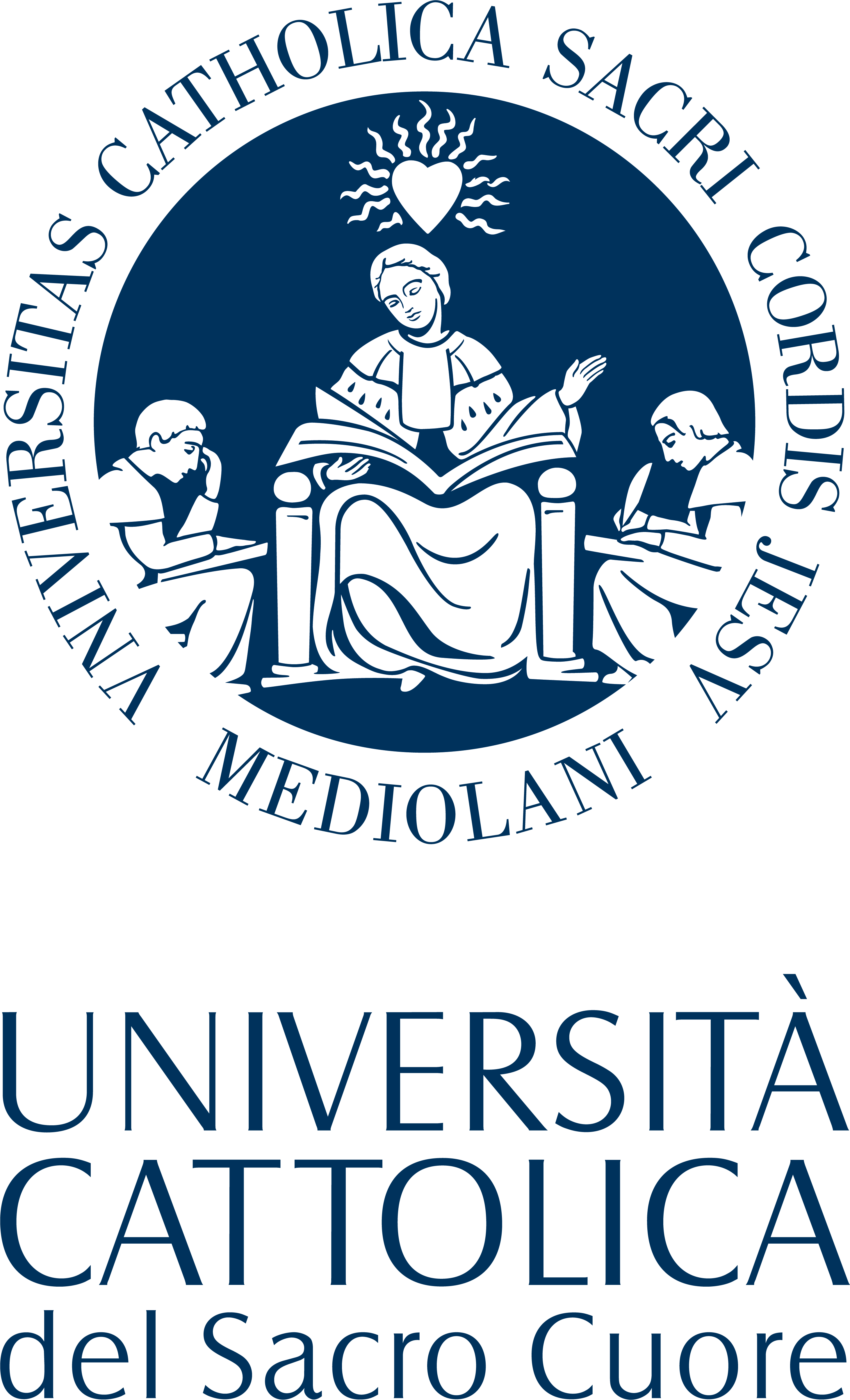titles and abstracts
Michela Ascolese Università di Firenze
Exact reconstruction of binary images by simple cycles
Abstract i In the field on Binary Tomography, one of the most studied topic is the inverse problem that consists in the reconstruction of an unknown object, interpreted as a binary image, starting from the knowledge of its projections collected by means of X-rays along a certain set of directions. The problem is ill-posed in general, meaning that different binary images sharing the same projections exist. To avoid ambiguities in the reconstruction process, some conditions on the considered directions can be imposed.
In this talk we present simple cycles of uniqueness, that are special sets of directions that guarantee the uniqueness of reconstruction of a binary image in a grid of finite size. The definition of simple cycle finds a practical application in the implementation of an algorithm for the reconstruction of binary images, that extends the results related to the algorithm BRA presented in 2019.
Augusto Bonilauri, Politecnico di Milano
Application of cortical mapping methods in fNIRS-MRI integration
Abstract Functional Near-Infrared Spectroscopy (fNIRS) is a non-invasive technique that allows to monitor brain activity by optical sources and detectors placed on the head of the subject. In recent years this technique has gained relevance both in research and clinical practice, since providing low-cost and functional measurements in an open environment while performing a wide range of tasks in daily life conditions. Nevertheless, an effective interpretation of fNIRS results is still hindered by the limited spatial resolution of measurements to cortical surface and variations in local sensitivity due to subject-specific anatomy.
Accordingly, the integration of fNIRS with anatomical MRI moves towards the full translation of fNIRS into clinical practice, but requires to consider two major problems: i) the forward problem of estimating the sensitivity profile of fNIRS measurements to cortical anatomy; ii) the inverse problem for performing cortical image reconstruction from measurement data. In this talk, firstly we aim to review current methods for forward and inverse problem. Next, we will provide methods for the assessment of fNIRS channel coupling to cortical areas, while also providing examples of fNIRS-MRI and fNIRS-fMRI integration.
Valentina Bordin - Davide Coluzzi, Politecnico di Milano - Università degli Studi di Milano
White matter hyperintensities as imaging biomarker of Alzheimer’s disease: an explainable AI investigation
Abstract Deep Learning (DL) approaches are powerful tools in a great variety of classification tasks. However, they are limitedly accepted or trusted in clinical frameworks due to their typical “black box” outline: while their architecture is well-known, the processes employed in classification are often inaccessible to humans. In this work, we employed “Explainable AI” (XAI) in the context of Alzheimer’s disease (AD) classification task to evaluate DL approaches. More specifically, we focus on notable brain abnormalities – known as White Matter Hyperintensities (WMHs) – aiming to assess their relevance in the final classification outcome. WMHs are areas of increased signal intensity on brain MRI, underlying alterations in the white matter axonal microstructure or interstitial fluid. Even though they have long been considered just an expected consequence of advancing age, modern research indicates that they have an important association with AD. Indeed, increased WMH volumes show a significant correlation with early neurological markers of AD – such as beta-amyloid deposits – in asymptomatic individuals, and with faster cognitive decline in symptomatic patients. By exploring their ability to enhance the disease identification within a DL framework utilizing neuroimages, we aim to complement and reinforce the existing evidence supporting their inclusion among the imaging biomarkers currently used for diagnosing and staging AD.
Alberto Bravin Università degli studi di Milano-Bicocca
Micro and Nano X-ray neuroimaging: from synchrotrons to laboratory sources
Abstract X-ray phase contrast tomography (PhC) has become the gold standard technique for 3D investigation of matter with X-rays. In PhC, image formation is sensitive to subtle changes in electron density within the materials, while conventional radiography based on X-ray absorption is also sensitive to the local electron density but modulated by the Z number of the material. As a result, PhC images show 10-100 times higher contrast than absorption-based images acquired at the same energy.
Exploitation of the PhC signal requires a highly coherent X-ray beam, which is naturally available in synchrotron radiation sources. However, recent technical developments on X-ray image generation and transport optics have enabled the spread of the technique beyond the synchrotron radiation facilities, which are difficult to access due to their limited number around the world: PhC imaging-based micro- and nano-tomography systems are now available on the market.
The presentation will examine the possibilities offered by micro- and nano-CT systems sourced by synchrotrons for the multiscale study of neuro-pathologies and the new perspectives opened by the laboratory-based PhC-based systems.
Eric Bui, Université de Caen Normandie and Caen University Hospital
Towards an AI-Based Treatment of Posttraumatic Stress: from Digital Phenotyping to Just-In-Time-Adaptive-Interventions
Abstract. Individuals exposed to a traumatic event (e.g., life-threatening event), are at high risk for developing mental health disorders including posttraumatic stress disorder (PTSD), depression, and anxiety disorders, that are debilitating, often follow a chronic course, and carry together one of the highest health care burden to society. However, to date, no cost-efficient strategy is widely available to predict, prevent, and intervene early on this range of trauma-related conditions.
The presentation will discuss how artificial intelligence (AI) might be used in the context of psychiatric disorders, and will present the vision of a future project focused on developing a set of Artificial Intelligence (AI)-based services that can be smoothly integrated in existing health care systems, and that will promote a patient-centered approach to predict, prevent, and intervene early on PTSD symptoms, after exposure to a traumatic event.
Azzurra di Palma - Miranda Bellezza, Università degli Studi di Firenze
Predicting Conversion from Mild Cognitive Impairment to Alzheimer’s Disease Using K-Means Clustering on MRI Data
Abstract: Alzheimer’s disease (AD) is a neurodegenerative disorder that leads to the loss of cognitive functions due to the deterioration of brain tissue. Current diagnostic methods are often invasive or costly, limiting their widespread use. Developing non-invasive and cost-effective screening methods is crucial, especially for identifying patients with mild cognitive impairment (MCI) at the risk of developing Alzheimer’s disease. This study employs a Machine Learning (ML) approach, specifically K means clustering, on a subset of pixels common to all magnetic resonance imaging (MRI) images to rapidly classify subjects with AD and those with normal Normal Cognitive (NC). In particular, we benefited from defining significant pixels, a narrow subset of points (in the range of 1.5% to 6% of the total) common to all MRI images and related to more intense degeneration of white or gray matter. We performed K-means clustering, with k=2, on the significant pixels of AD and NC MRI images to separate subjects belonging to the two classes and detect the class centroids. Subsequently, we classified subjects with MCI using only the significant pixels. This approach enables quick classification of subjects with AD and NC, and more importantly, it predicts MCI-to-AD conversion with high accuracy and low computational cost, making it a rapid and effective diagnostic tool for real-time assessments.
Paolo Finotelli, Université de Caen Normandie
Mathematical modeling of human memory
Abstract The mathematical study of human memory is still an open challenge. The aim of this talk is to provide the audience with a description of some prominent models, involving mathematical analysis and linear algebra, designed to describe how memory works by predicting the results of psychological experiments.
Ivan Fumagalli, Politecnico di Milano
Numerical Modeling of Brain Multiphysics Flow Dynamics and Waste Clearance
Abstract. The onset and development of neurodegenerative diseases are mostly associated with an impairment of the waste clearance mechanism. This mechanism mainly relies on the Cerebrospinal Fluid (CSF), whose filtration in the cerebral tissue and flow in the brain ventricles favor the washout of misfolded proteins. In this study, we investigate CSF dynamics in the human brain and its interaction with blood dynamics and parenchymal tissue mechanics, by a coupled model integrating Multiple-network Poro-Elasticity (MPE) equations for tissue filtration and Stokes equations for CSF flow in the ventricles. To discretize the model, we use a numerical method based on polygonal/polyhedral mesh (PolyDG), whose flexibility allows for a natural treatment of the brain’s complex geometry. The method is verified by its implementation in our PolyDG library lymph ( https://lymph.bitbucket.io/ ), and patient-specific 3D geometries reconstructed from magnetic resonance images are assessed based on FEniCS.
This work has been supported by ICSC-Centro Nazionale di Ricerca in High Performance Computing, Big Data, and Quantum Computing funded by European Union-NextGenerationEU.
Lajos Hajdu, University of Debrecen
Error correction for Discrete Tomography \((\mathbb{Z})\)
Abstract. After Ceko, Pagani and Tijdeman had developed a fast method to reconstruct a consistent discrete tomography problem, the next step was to determine what is the most likely set of consistent line sums in case of an inconsistent set of line sums.
As usual, consider a function \(f: A \to R\) where \(A\) is a finite subset of \(Z^2\) and \(R\) is an integral domain. Some authors have developed methods to recover the function \(f\) under suitable conditions by using known properties of the object. We investigate the case where a small number of line sums are incorrect as may happen when discrete tomography is applied for data storage or transmission. We show how less than \(d/2\) errors can be corrected, where \(d\) is the number of directions for the line sums, and that this bound is best possible. Further, we extend a result of Chandra, Svalbe, Gúedon, Kingston and Normand by showing that if it is known that the line sums in any \(k\) directions are known to be correct, then the line sums can be corrected in each other direction with less than \(k/2\) wrong line sums. The proofs depend on a line sum relation lemma of Hajdu and Tijdeman. We briefly discuss complexity questions of our algorithm, as well. The presented new results are joint with M. Ceko and R. Tijdeman.
Davide Marocco, Università degli Studi di Napoli Federico II
Artificial Intelligence, Neural Networks and Psychometrics - An introduction to Methods and Applications
Abstract The seminar aims to introduce various topics related to the utilization of artificial intelligence in psychometric contexts, both theoretically and through practical examples. In particular, the following will be discussed:
-The specifics of the predictive approach, typical of machine learning and artificial intelligence, when applied to psychometric contexts. In this approach, the process leading to data generation is unknown, and the researcher's interest lies in finding an algorithm capable of recognizing patterns of relationships present in the data, to achieve the best prediction of output values for input values of new observations.
- Artificial neural networks and their multiple architectures, which allow for application in various contexts, including psychometrics. The intrinsic characteristics of particular models of artificial neural networks will be studied. The reason for this interest is due to their application in psychometric field in order to generating latent spaces structures in which to explore the relationships between variables.
These topic will be discussed using practical examples related to the construction and analysis of psychometric scales and the potential applications of artificial intelligence in diagnostic-evaluative contexts.
Lorenzo Mella, Università di Modena e Reggio Emilia
New constructions of Heffter arrays
Abstract Heffter arrays are a class of zero-sum combinatorial arrays introduced by Archeacon in 2015, having applications to cycle decompositions and graph embeddings. Since then, the existence problem of these arrays, and their variants and generalizations, has been extensively studied, leading in some cases to complete solutions for every set of admissible parameters.
In this talk, we present some of these results and the techniques that have been employed to construct these arrays. Moreover, we show some new constructions that have been recently obtained for weak Heffter arrays (joint work with S. Costa and A. Pasotti), and relative Heffter arrays.
Anita Pasotti, Università di Brescia
Zero-sum combinatorial arrays
Abstract The notion of a Heffter array has been introduced by Archdeacon in 2015.
Given a positive integer $v=2nk+1$,a Heffter array H$(n;k)$ is an $n \times n$ partially filled array with entries in $\mathbb{Z}_{v}$, satisfying the following conditions:
1) each row and each column has exactly $k$ filled cells;
2) for every $x\in \mathbb{Z}_{v}\setminus \{0\}$, either $x$ or $-x$ appears in the array;
3) the sum of the elements in every row and column is $0$ in $\mathbb{Z}_v$.
I'll present the most important existence results on this topic and I'll focus on its connections to difference families and orthogonal cycle systems.
Maurizio Santini, Università degli studi di Bergamo
On the problem of diffusivity in biological materials: estimation of diffusion coefficients via X-ray high-resolution radiography
Abstract. The diagnosis of a cancer involves the study of a biopsy, suitably processed and treated and is essential for a correct diagnosis. Tissue processors performs the entire processing protocol automatically, often relying on empirical timing related to chemical diffusions in the samples. The determination of the diffusion coefficient in biological materials is still under study with, unfortunately, inaccurate results that may leads in tissue degradation. The authors present an experimental technique, based on image analysis of a multitude of X-ray high-resolution radiographs acquired over time, during a test in which a pork liver biopsy is immersed in one of the classic processing solvents (alcohol 70%). The attenuation of the intensity of the ionizing beam (emitted by a microfocus X-ray source) is proportional to the concentration of the solvent which diffuses in the histological preparation. The diffusion of the solvent in the sample can be approximated by a time-dependent diffusion equation: An analytical solution of equation in cylindrical coordinates is used to simplify the analysis and the solution of the related inverse problem allows to evaluate the diffusion parameter \(\alpha\).


